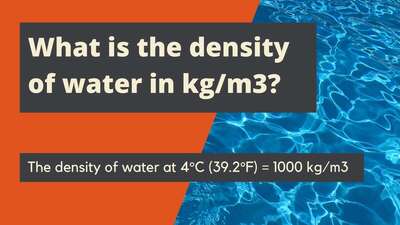Density of water g/ml
Density of water g/ml – are you wondering what its value is? Do you want to know why the value of the density of water g/ml vary at different temperatures? We have the answers to both these questions. And, of course, we are going to share them with you, so keep reading.
The density of water g/ml is the density used mostly when it comes to smaller mass or volume. This unit of density, that is g/ml, will be perfect, for instance, to measure density of water in a glass.
Have you ever tried to calculate the density of water g/ml in a case like that mentioned above? Did you have some troubles then? But… Do you know that it is possible to know the topic of density of water g/ml clearly and finally can use this knowledge without any problems in practice?
And that’s what we want to do in this article – explain the topic of the density of water g/ml as easy as possible so all of you can finally understand it. Without any further ado, let’s start.
Density of water grams per ml at 4 degrees Celsius
We will start the topic of the density of water grams per ml at 4 degrees Celsius. Why exactly 4, and not, for example, 0 degrees Celsius?
You have to know that the water density is the biggest at 4 degrees Celsius. It is caused by 2 physical effects acting together. They ‘fight’ each other, so that’s why the water density increases as much.
What are these effects? First, faster molecules moving. You need to know that the molecules move faster when the temperature increases. Second, forming clusters. When the temperature is coming to 0 degrees Celsius, the clusters start forming.
So after that explanation, let’s go back to the value of the density of water grams per ml at 4 degrees Celsius. The density of water g/ml at 4°C is equal to 1. See this result also down below:
- the density of water = 1 g/ml
Why is the density of water 1 g ml? We hope that all of you can answer this question now.
How do the values of density of water present at higher temperatures? Let’s check it in the next part of the article.
Density of water g/ml at higher temperatures
So what are the values of the density of water g/ml at higher temperatures than 4 degrees Celsius? As you may know, these values at higher temperatures will be smaller, because the clusters stop forming when the temperature increases.
Do you know that even at 4.4 degrees Celsius the value of the density of water g/ml is not equal to 1? The density of water is equal to 0.9999 g/ml then. Physics is fascinating, don’t you think?
Of course, the higher temperature, the bigger difference. You can see it clearly even when it comes to not super high temperature, like 10 degrees Celsius. The density of water g/ml is then equal to 0.99975.
So what about the value of the density of water grams per ml at, for instance, 60 degrees Celsius? The difference is even bigger. The result is 0.98338. Now, even if you round off the result, for instance, to 2 decimal places, it will differ significantly from the previous results.
At the boiling point, that is at 100 degrees Celsius, the water density g/ml is even lower. The value is equal to 0.95865 only.
We talked about only a few examples, but we gathered more in the table. The density of water g/ml chart you can find down below:
| Temperature (°C / °F) | The density of water g/ml |
| 4.0 / 39.2 | 1.00000 |
| 4.4 / 40 | 0.99999 |
| 10 / 50 | 0.99975 |
| 15.6 / 60 | 0.99907 |
| 21 / 70 | 0.99802 |
| 26.7 / 80 | 0.99669 |
| 32.2 / 90 | 0.99510 |
| 37.8 / 100 | 0.99318 |
| 48.9 / 120 | 0.98870 |
| 60 / 140 | 0.98338 |
| 71.1 / 160 | 0.97729 |
| 82.2 / 180 | 0.97056 |
| 93.3 / 200 | 0.96333 |
| 100 / 212 | 0.95865 |
How to find density of water
At the end, we want to quickly mention how to find the density of water. Why quickly? Because to check the density of water g/ml in a way we want to show you, you need only one thing – the temperature.
So how can you find the density of water g/ml? You need to check the temperature of water and then find its value in the table above in the first column. Then you can easily check what is the value of the density of water at this temperature in the second column. That’s all.
As we promised, it’s a quick and easy way to find the density of water, isn’t it?
We hope that now the topic of the density of water g/ml is finally clear for you. We explained to you not only what the maximum density of water is, but also how the values of the water density look at other, higher temperatures. We showed you how to find the density of water too.
It’s a quite big dose of knowledge, don’t you think? So let’s use it in practice now!









